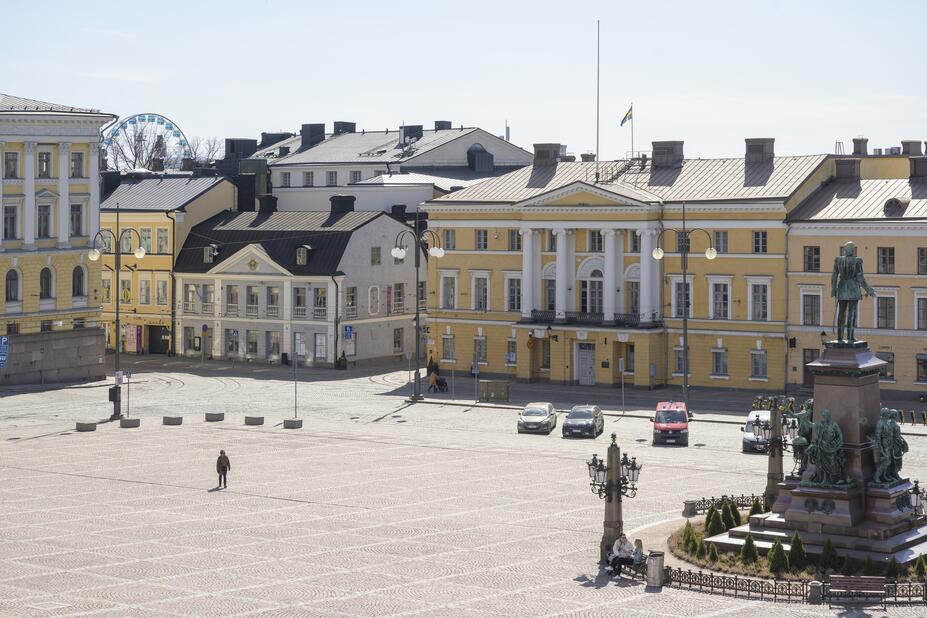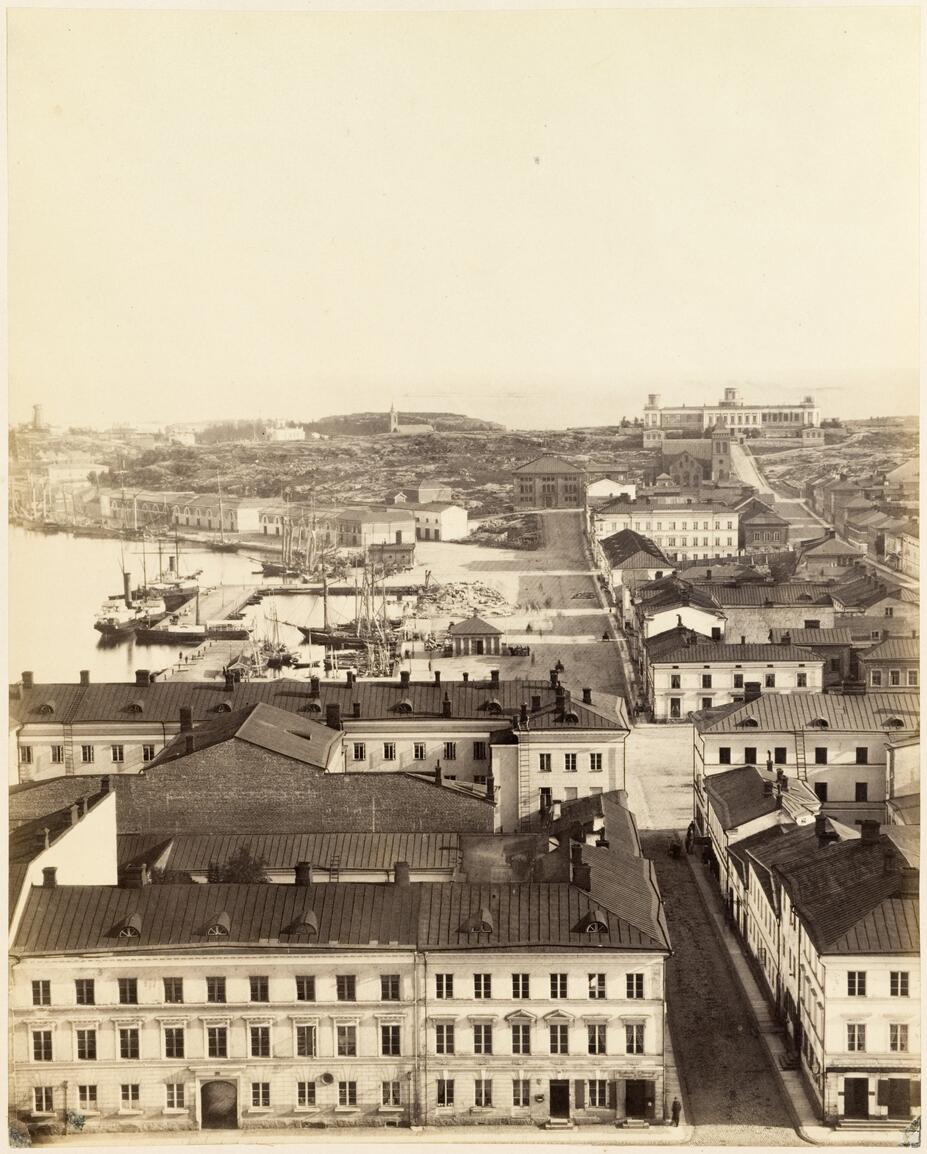The oldest building in the Lion Block is the Bock House, otherwise known as the Old Town Hall, established in 1763. The house was built for merchant and magistrate Gustaf Johan Bock. It was later altered to become the official residence of the governor general in 1816–1819, when a third floor was added. The alteration gave the façade its Empire-style look, as designed by Carl Ludvig Engel. The façades of other houses by the Senate Square were also changed to fit the Empire style. The city bought the Bock House in 1837 for use as the Town Hall. The town court and magistrate also used the building from 1913 to 1985. The exquisite turquoise Empire Room is located in this building. The fully detailed roof, refined colour scheme and golden mirrors highlight the power and wealth of 18th century tradespeople.
The Burtz House built in 1762 and the Hellenius House built in 1770 are also worth mentioning. In their original form, they were homes for exalted Helsinki citizens: Nils Burtz was a chief magistrate and merchant, and Carl Hellenius a country treasurer. From the end of the 1800s until the 1986, the two houses were home to the Helsinki Police Department.
In the 2000s, the City of Helsinki founded the property development company Helsingin Leijona to improve the area of the old merchants’ quarters between the Market Square and the Senate Square, and to reinvent the space an integral part of a vibrant city culture. Municipal offices were transferred elsewhere and the street-level facilities were renovated and opened to the public. These days, the blocks between the Market Square and the Senate Square and on the other side of Unioninkatu are called Tori Quarters. In 1820, the blocks were named Elephant, Lion, Rhino and Dromedary. The oldest buildings in the area are from the 18th century, and they are located on the southern side of the Senate Square. Today you will find cafés, restaurants, small shops and the Helsinki City Museum in them.


